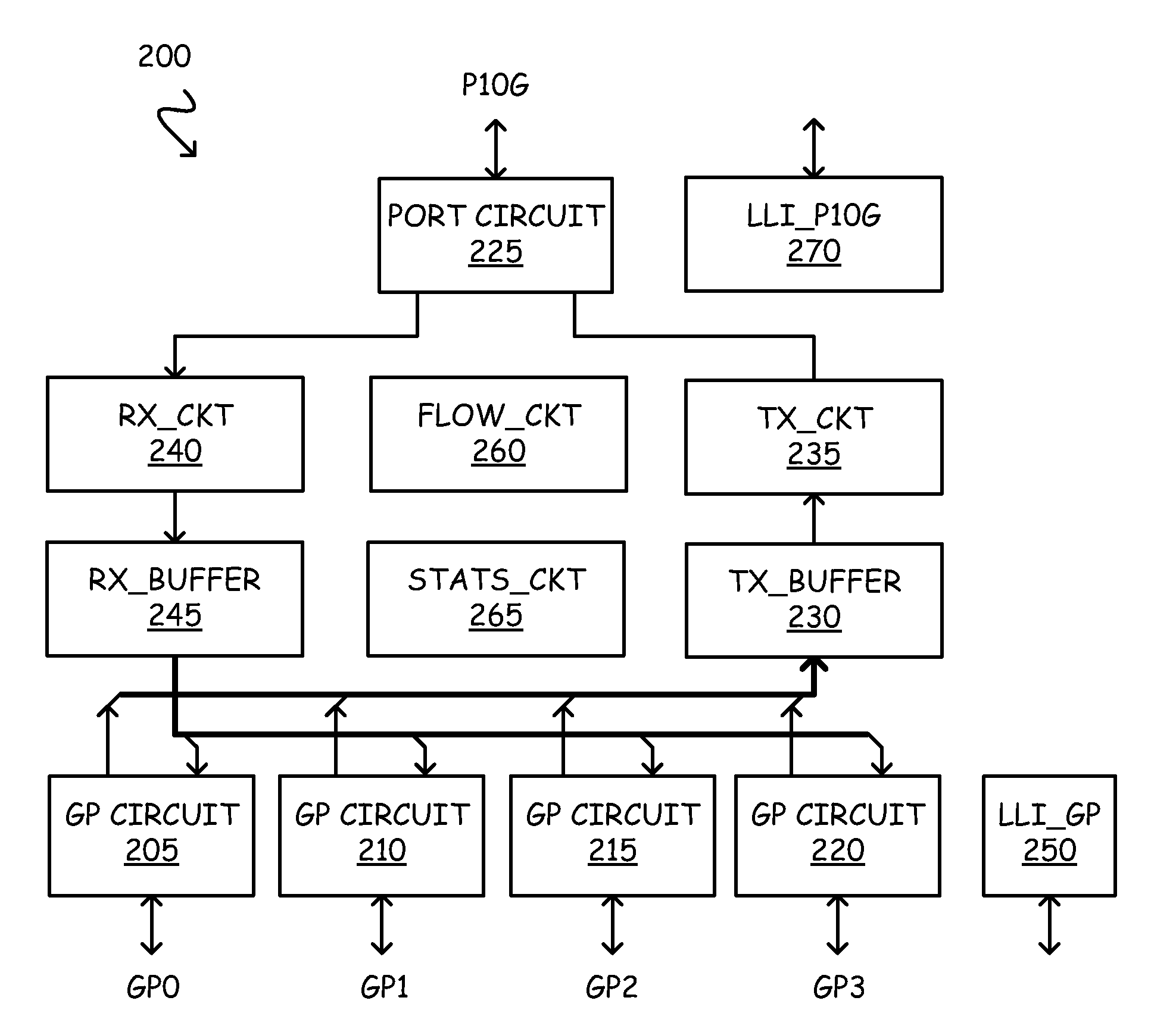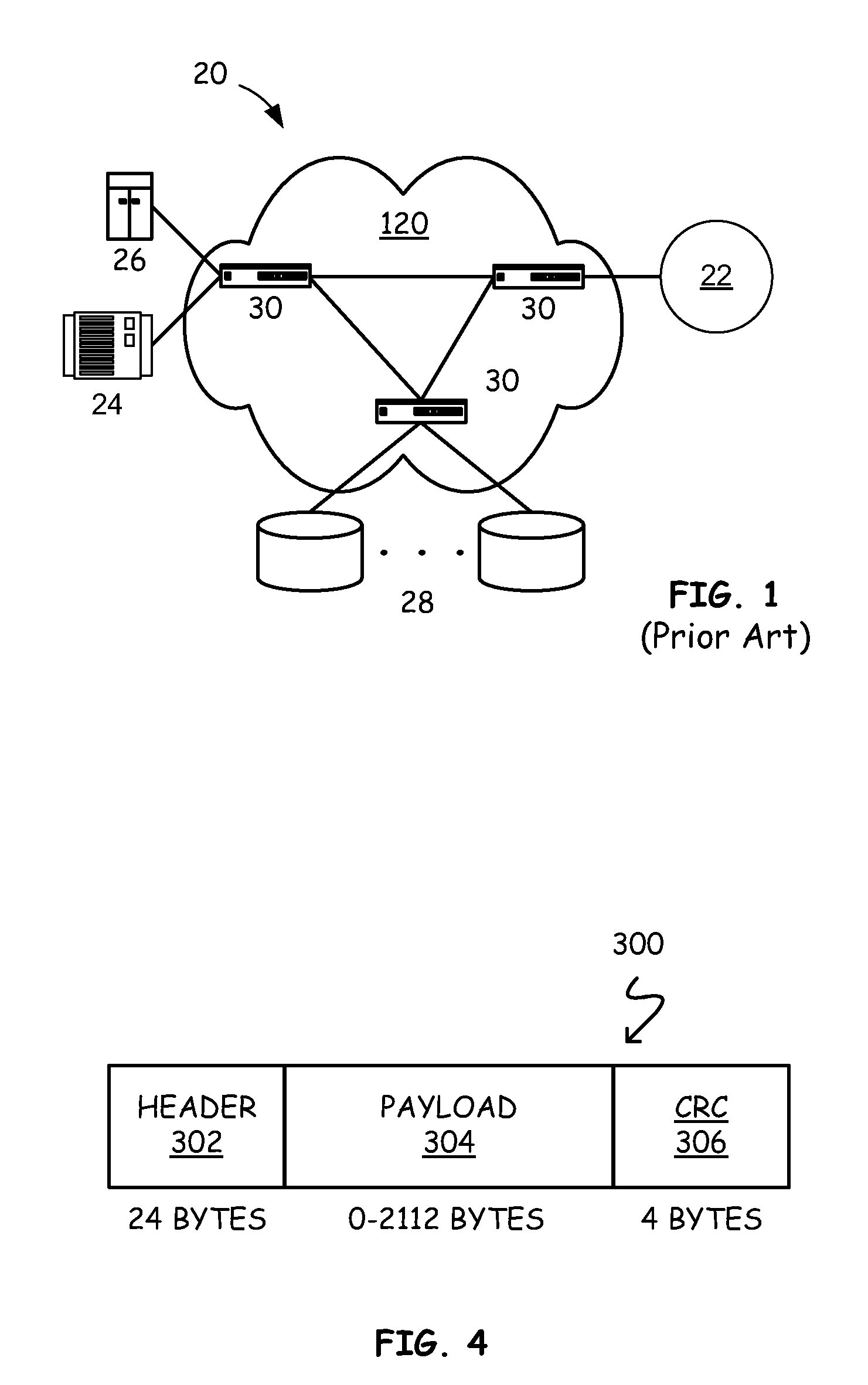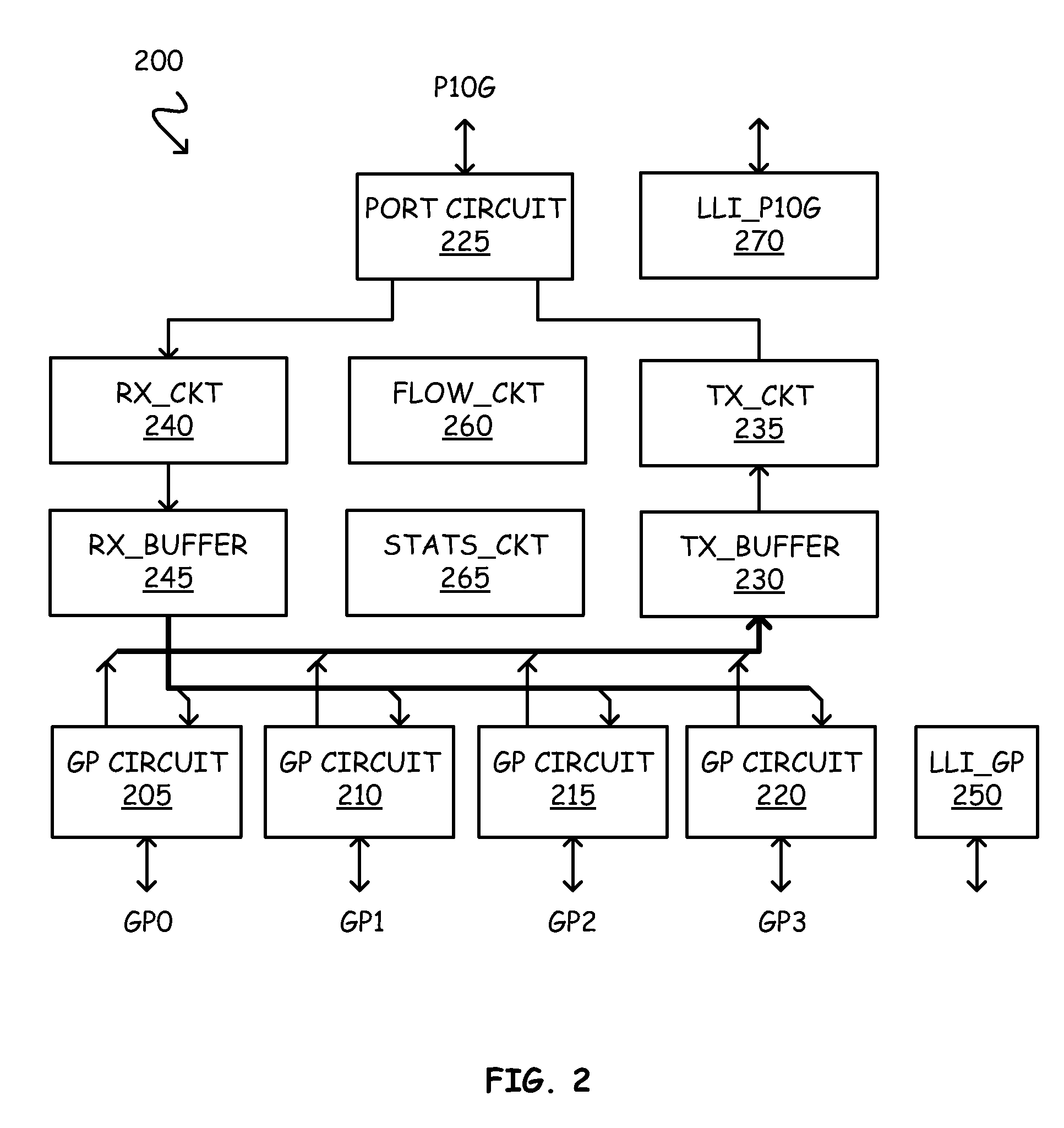Cascade credit sharing for fibre channel links
a fibre channel link and credit sharing technology, applied in the field of network switching devices, can solve the problems of limiting transmission distance and inability of existing fibre channel switches to fully satisfy the high speed communication need, and achieve the effects of high speed transmission, longer communication range, and high speed speed
- Summary
- Abstract
- Description
- Claims
- Application Information
AI Technical Summary
Benefits of technology
Problems solved by technology
Method used
Image
Examples
case 1
[0066] Case 1, where the combined frame rate of all GP-ports is higher than the 10 G-port frame rate. The counters for this case may be initialized as follows:
[0067] F_THR=0
[0068] OCTC=7FFh (maximum positive value)
[0069] EOCC=0
[0070] Since the combined frame rate of all GPs is higher than the 10 G-port, the E-chip 160 cannot be overrun, and EOCC and OCTC are not necessary, so they are initialized to their extreme values.
case 2
[0071] Case 2, where the combined frame rate of all GP-ports is lower than the 10 G-port frame rate. The recommended value is calculated as follows:
[0072] F_THR may be two times the number of GP ports (in the example with four GP ports, 2×4=8) or higher otherwise and applies,
F—THR=max(2*NUM—GP,roundup(ICREDIT*SPEED—INDEX))
[0073] The counters for this case may be initialized as follows:
[0074] OCTC=F_THR
[0075] EOCC=ICREDIT
[0076] The following numeric examples show the initialization of the OCTC and EOCC counters:
[0077] Assuming GP-ports run at a nominal 3 Gbps:
[0078] ICREDIT=32 (a downstream switch advertises 32 credits);
[0079] GP_FRAME_RATE=146.2 kframe / s
[0080] XG_FRAME_RATE=592.47 kframe / s
[0081] NUM_GP=4
[0082] Then SPEED_INDEX=0.0129
[0083] F_THR=8
[0084] SPEED_MATCH_FRAMES=1
[0085] UNBUF_NUM_FRAMES=17
[0086] OCTC=8 and EOCC=32
[0087] Another numerical example, where the GP-ports run at a nominal 2 Gbps:
[0088] Assuming ICREDIT=64 (a downstream switch advertises 64 credit...
second embodiment
[0097] the present invention where the maximum transmission speed is exchanged for maximum transferring distance, i.e. the long haul mode of operation, is shown in FIGS. 6 and 7.
[0098] In FIG. 6, two E-chips are used in long haul, so there are no 10 G-ports. Two GP-ports in E-chip 150 and two GP-ports in E-chip 160 are connected through ISLs 296 and 294. These two ISLs 296 and 294 are trunked as one link. The distance between the two switches having E-chip 150 and 160 can be very long, such as several hundred kilometers. The number of links to E-chips is reduced from four GP-ports to only two GP-ports. The available buffer spaces in the E-chips are now shared by two GP-ports.
[0099] As discussed earlier, at a certain frame transmission rate, the longer the distance, the more credit a receiver needs to advertise to the transmitter. The size of the receiver buffer needed at certain frame transmission rate for certain distance, in terms of number of frames or credit can be determined b...
PUM
 Login to View More
Login to View More Abstract
Description
Claims
Application Information
 Login to View More
Login to View More - R&D
- Intellectual Property
- Life Sciences
- Materials
- Tech Scout
- Unparalleled Data Quality
- Higher Quality Content
- 60% Fewer Hallucinations
Browse by: Latest US Patents, China's latest patents, Technical Efficacy Thesaurus, Application Domain, Technology Topic, Popular Technical Reports.
© 2025 PatSnap. All rights reserved.Legal|Privacy policy|Modern Slavery Act Transparency Statement|Sitemap|About US| Contact US: help@patsnap.com



